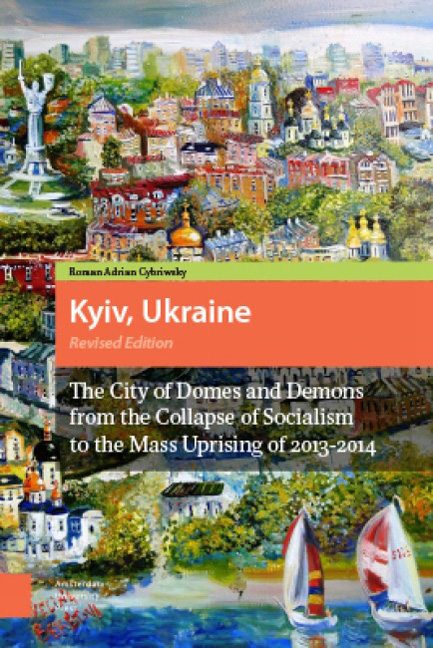 Kyiv, Ukraine
Kyiv, Ukraine Book contents
- Frontmatter
- Dedication
- Contents
- List of Illustrations and Tables
- A Note about Transliteration
- Preface and Acknowledgements
- 1 Far from Heaven
- 2 The Missing Museum of the History of the City of Kyiv
- 3 Sketches from the Capital
- 4 Soviet Ways, Post-Soviet Days
- 5 Historical Memory
- 6 The Center of Kyiv
- 7 A Geography of Privilege and Pretension
- 8 Landscapes of Struggle
- 9 “Suburbia”
- 10 Seamy Stories
- 11 The Defenders of Kyiv
- 12 Reflections
- Postscript
- References
- References
7 - A Geography of Privilege and Pretension
Published online by Cambridge University Press: 10 December 2020
- Frontmatter
- Dedication
- Contents
- List of Illustrations and Tables
- A Note about Transliteration
- Preface and Acknowledgements
- 1 Far from Heaven
- 2 The Missing Museum of the History of the City of Kyiv
- 3 Sketches from the Capital
- 4 Soviet Ways, Post-Soviet Days
- 5 Historical Memory
- 6 The Center of Kyiv
- 7 A Geography of Privilege and Pretension
- 8 Landscapes of Struggle
- 9 “Suburbia”
- 10 Seamy Stories
- 11 The Defenders of Kyiv
- 12 Reflections
- Postscript
- References
- References
Summary
A Diamond Monster
The word monster is used in both Ukrainian and Russian to refer to intrusive new buildings that are built without neighborhood welcome. They rise up from the earth and devour the city, something like the monster Godzilla emerging from Tokyo Bay to wreak havoc on Japan's capital. In Kyiv, the most aggressive monsters tend to be high-rises for rich people. They wreck history, historic cityscapes, and the natural environment, and impose themselves on existing infrastructure such as transportation or parking spaces, where they wreak havoc as well (Figure 7.1). They are built without reference to any overall city plan, in part because Kyiv does a very poor job of planning where to build, as well as without attention to zoning, in part because Kyiv zones so poorly. They simply appear wherever a developer has acquired access to a wanted site. Often, the construction is on public land: a park or playground, for instance, and proceeds simply because someone in the developer's pocket has issued papers, however dubious, that authorize construction. Thus, monsters and raiders are intimately intertwined. It's all very murky and secretive – a function of collapsed centralized decisionmaking and document issuance in the Soviet state followed by too long a period of free-for-all chaos in advance of any new order (Cybriwsky, 2012a).
A building called Diamond Hill is a case in point (Figure 7.2). It is a residential tower of 20 stories and 83 meters height that was developed by K.A.N. Development Ltd. on a prime site either on or immediately adjacent to parkland in the Pechersk District near Kyiv's center, and stands high on the same bluff as Pecherska Lavra and other prominent monuments. In our telephoto composition from across the Dnipro, Diamond Hill appears to loom over bathers at one of the city's popular beaches. The site had been parkland, but the builder had somehow managed to gain access nonetheless. There is a stone marker next to the building that reads in Ukrainian: “The Church of St. Michael stood here. It was built in 1690-1693 through the munificence of Ivan Mazepa, an especially renowned hetman of Ukraine. It was destroyed in the 1930s by the communist regime.”
- Type
- Chapter
- Information
- Kyiv, UkraineThe City of Domes and Demons from the Collapse of Socialism to the Mass Uprising of 2013–2014, pp. 189 - 214Publisher: Amsterdam University PressPrint publication year: 2014
